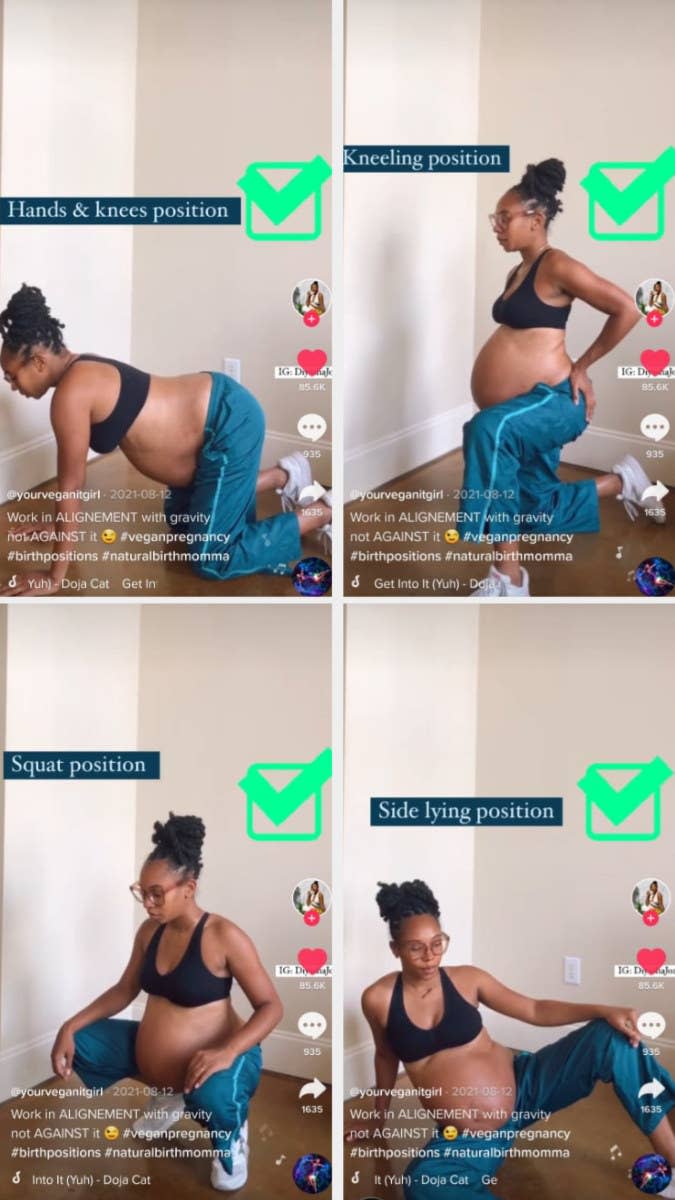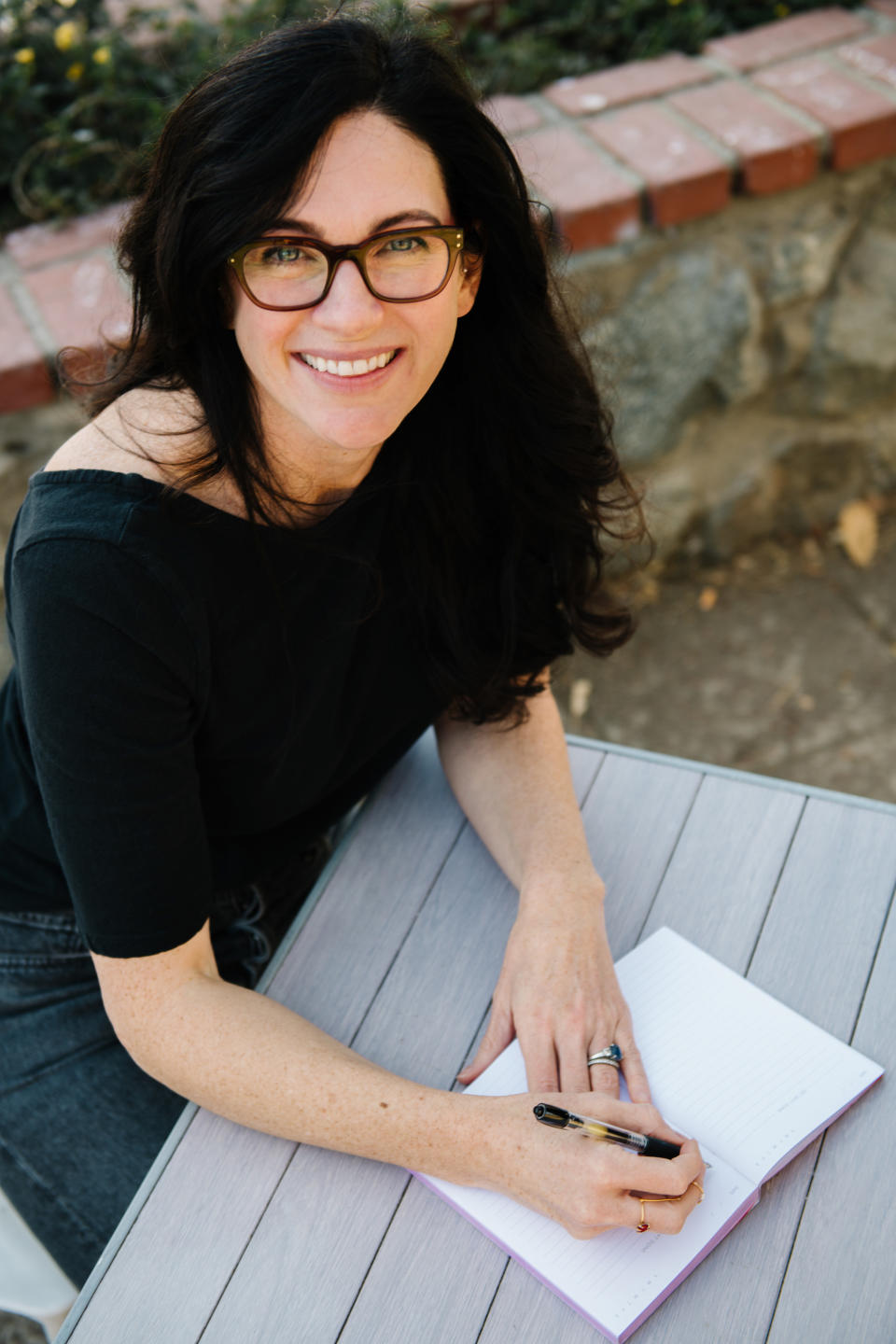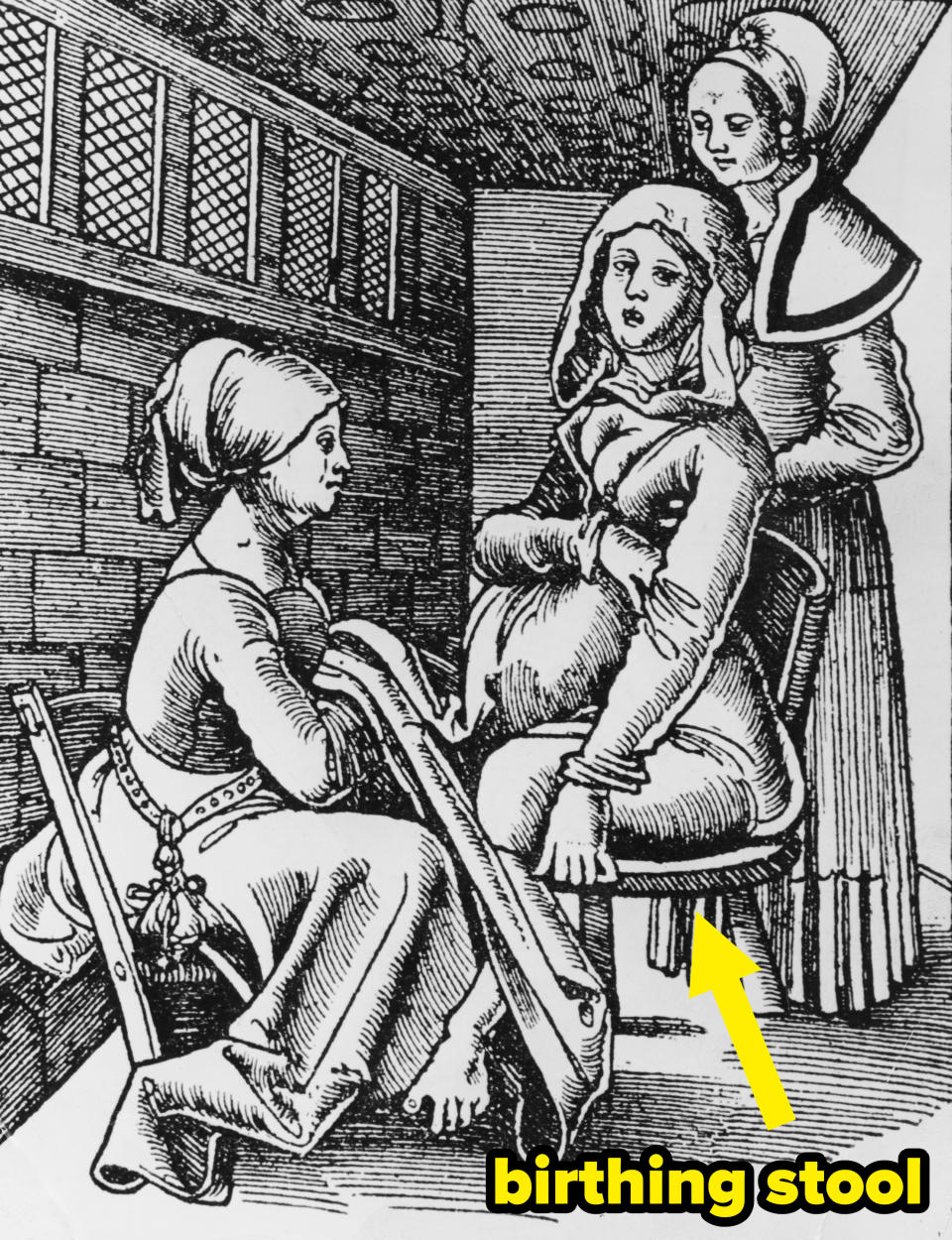This Woman Went Viral For Demonstrating Different Childbirth Positions, And I've Never Even Questioned Why Lying On Your Back Is The Norm
When you think of childbirth, chances are, you envision someone lying on their back, typically, in a hospital bed. So when Diyasha Jones (@yourveganitgirl) posted a video to TikTok demonstrating different birth positions — ones she used for her three home births — she quickly went viral.
@yourveganitgirl Work in ALIGNEMENT with gravity not AGAINST it ?? #veganpregnancy #birthpositions #naturalbirthmomma
? Get Into It (Yuh) - Doja Cat
Amassing nearly 1 million views, Diyasha's video shows herself in four different birth positions: a hands-and-knees position, a kneeling position, a squatting position, and a side-lying position.

Many viewers were quick to comment in response. Some were in jest (one person wondered, "Why can't we just lay eggs like chickens?"), but the majority expressed agreement, interest, and their stories of childbirth.

To find out how she learned about these positions and why she decided to use them when giving birth at home, BuzzFeed reached out to Diyasha. "I've always been a natural-type person," she said, "And just being a Black woman understanding the Black maternal mortality rate in hospitals, I was like, I'll look, find resources, and see what's available, then just build around it."
When it comes to how and when to decide to get into one of these positions, Diyasha explained that it comes down to natural instinct when it's time to push: "I think people are confused when they hear the word labor. When I'm talking about childbirth positions, I mean at the moment when you feel the urge to push. With my son, I wasn't in a squat position the whole 18-hour labor. When it's time to push the baby out, get into your position."
Diyasha was also surprised with the reception of her video, noting that many people thanked her for putting the information out there: "There were so many people who thought it made sense when you see it, but because you've only seen things done this one way, you think that is the standard."
To learn more about effective childbirth positions, BuzzFeed spoke with Sara Twogood, MD, a board-certified OB-GYN in Los Angeles and co-founder of Female Health Education and the online magazine Female Health Collective.

"The most effective way to push out a baby is the way the patient most effectively pushes! That can be lying on the back or side, on hands and knees, or squatting," Dr. Twogood explained, before elaborating on why certain positions could be less advantageous than others.

"Sitting up is not usually the best position because of the angle of the pubic bone — the baby needs to work its way underneath the pubic bone — so it is harder to negotiate than squatting or lying."

"Some positions, like squatting, make it more difficult to help with the rare complication of shoulder dystocia. That's one reason a laboring person may be asked to change positions midway through delivery," Dr. Twogood continued.
BuzzFeed also specifically asked Dr. Twogood about any pros or cons of different positions. She confirmed, "No one position has been shown to be optimal or detrimental to laboring. In general, changing positions often during labor is thought to be helpful. That might mean walking, then squatting, then hands and knees, then lying flat and resting."

Now, if you're curious about how an epidural could influence one's choice in childbirth positions, Dr. Twogood noted that even without the epidural, position changes are usually still done every hour or so. She clarified, "The position changes are a bit different due to the epidural though."
If the most effective childbirth position is the one most effective for the person giving birth, then why is lying on your back the default? BuzzFeed next spoke with Randi Hutter Epstein, MD MPH, a doctor, medical writer, and the author of Get Me Out: A History of Childbirth From the Garden of Eden to the Sperm Bank and Aroused: The History of Hormones and How They Control Just About Everything.

Dr. Epstein is also currently a writer in residence at Yale University's medical school and a lecturer in the university's English department. Additionally, she's an adjunct professor at Columbia University Graduate School of Journalism.
Since ancient times, midwives have delivered babies. But by the 1600s, Dr. Epstein said, "Doctors started having turf battles with midwives, saying, 'We're better at delivering babies; this is a medical thing.'" Over time, childbirth shifted from the domain of midwives to doctors. In the 1800s, as medicine became professionalized, more standards were enforced. Medical schools only accepted men, and midwives were forbidden from practicing in hospitals. By 1930, 75% of women gave birth in hospitals. That percentage swelled to 90% by 1950, and now roughly 98% of women give birth in hospitals.

Before beds, birthing stools — chairs or stools with a hole in the middle or with a U-shaped seat — had been used for millennia in childbirth (originally two stacks of bricks with a gap in between that women sat on), tracing back to 1450 BCE in Ancient Egypt.
Given that midwives weren't allowed in hospitals and hospital births became more prevalent, it became the norm for male doctors to oversee childbirth. It wasn't until 1849 that Elizabeth Blackwell, who disguised herself as a man to be admitted after being rejected by 10 medical schools, became the first woman in the US to be granted a medical degree.
Industrialization in Europe and the US also contributed to the shift to hospitals, as lower-class women were more likely to live in conditions that could lead to disease or injury, making homebirths riskier.
Dr. Epstein speculated that the shift from midwifery to doctors and, consequently, hospitals, led to lying on one's back, becoming the default childbirth position as hospitals already had beds for patients. "I think there's a lot to be said about delivery being easier for doctors if a patient was in a bed lying down vs. on their hands and knees, but other historians have said that it could be doctors thinking it was safer," she commented.
As for midwifery today, laws differ by state. In states that don't offer licenses, midwives are at risk for criminal prosecution for unlicensed healthcare if they help deliver babies — something that posed a challenge for Diyasha's first home birth: "I wanted an all-Black birth team, but it ended up not being that way because I live in North Carolina, and in North Carolina, it is technically illegal for you to have a midwife."
Overall, many norms and practices regarding childbirth stem from cultural influences. Fortunately, King Louis XIV was not one of those influences. While he did have a childbirth fetish, Dr. Epstein said it's a myth that he required women to give birth lying on their backs. However, French physician Fran?ois Mariceau — who practiced while Louis XIV was king — is sometimes accredited with normalizing lying on your back.

As childbirth was medicalized, Mariceau swapped birthing stools for beds and, in 1668, published a book on obstetrics. In it, he wrote that women were able to better breathe and preserve their strength (to handle pain) when on beds lying on their backs. The book established obstetrics as a science and was then translated from French to several different languages.

Some cultural influences Dr. Epstein mentioned that did affect childbirth include Queen Victoria's use of chloroform as an anesthetic for her eighth (of nine) delivery in 1853, popularizing anesthesia amongst London's elite; the invention of twilight sleep (a mixture of morphine and scopolamine) in the early 1900s; and feminist movements.
Initially, doctors rejected twilight sleep, but women pushed to use it during childbirth, forming the National Twilight Sleep Association in 1914 to demand that doctors in the US adopt the practice. Then, feminist movements in the 1970s began advocating for natural births.
In the end, the best childbirth position is the one that works best for the person giving birth. If you are interested in trying a specific birthing position and plan on giving birth in a hospital, the best course of action is to speak to your doctor about it beforehand so that you're on the same page.

Dr. Epstein acknowledged, "If you are in pain or in discomfort, I do think it would take a woman who feels pretty empowered to be able to say — while sitting in a hospital room with a bed — you know, that I'd rather squat on the floor."
She added, "I could see an OB-GYN rolling their eyes and being like, 'You want me to get down on the floor underneath you?' You know, I think a lot of it is the practicality of it." However, in spite of any potential pushback, it's important to communicate and worth communicating what you want with your doctor.
As for Diyasha's intentions with sharing her video, she expressed, "I just want people to know that there are more options out there and to give them a newfound perspective on what they're allowed to do. At the end of the day, it's your body; it's your choice. You can choose to labor this way. You can choose to set the scene and set the tone for how it is that you want to birth and bring your children into this world."
She concluded, "I really want to empower women to find their voice, even if it's with their partner or friend or somebody that can advocate for them. I think that's the beauty of me being able to have all three kids at home and have different, but still positive, experiences. I can share different things in order to be like, you know, I did it — you can do it."
For more on the following topics, check out these resources:
? Positions for Labor and Birth by Allina Health
? Labor Support Resources by Childbirth Connection
? What Is a Birth Center? by the American Association of Birth Centers
? Resources for Choosing a Place of Birth by Childbirth Connection
? Midwifery Resources and Information by State by the Midwives Alliance North America